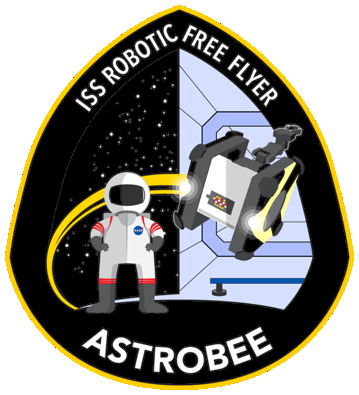 |
NASA Astrobee Robot Software
0.19.1
Flight software for the Astrobee robots operating inside the International Space Station.
|
 |
NASA Astrobee Robot Software
0.19.1
Flight software for the Astrobee robots operating inside the International Space Station.
|
Code should be documented using doxygen.
Add here an explanation of the overall structure and how to create subsystem pages (or just provide a default template).
Astrobee UML diagrams are created using plantuml that transform text files into beautiful UML 2 compliant diagrams.
Specific notations used in the diagrams to represent ROS communication schemes is described in: Astrobee UML Notations
Despite the ads overloaded website, plantuml is free and open source. The plantuml Reference Guide walks to all the diagrams types.
Plantuml relies on Graphviz that should be already installed since ROS is also using this tool to render runtime node/topic graphs. There are many ways to write/generate plantuml diagrams: http://plantuml.com/running. Choose the integration that best suit you, but vim + command line java works perfectly.
Note: some diagrams are not generated correctly when using graphviz 2.40 (layout stretched vertically). So for now please use graphviz 2.38.
Note: to re-active the 2.38 that keep being updated on Mac:
sudo port activate graphviz @2.38.0_3+pangocairo
To generate the diagrams from the doc\diagrams directory:
Our toolchain incudes Doxygen python filters to interpret *.msg, *.action and *.srv files. Internally, the filters convert the messages, topics and action files to markdown, and renders them in a hierarchy of Doxygen 'module' pages. So, they will appear in the same structure as the written markdown documentation, and not as classes / structs or other types.
In order for the files to be interpreted correctly, one needs to abide by a couple of simple rules.
The ROS test framework (rostest) is build upon the Google test framework. The idea behind a ROS test is that it first launches a collection of ROS nodes, and then starts the unit test, which runs tests against the ROS nodes.
Writing a unit test for a package involves modifying the package's CMakeLists.txt and package.xml files, and writing a collection of test cases. To see an example, have a look in the ./tools/visualeyez folder.
To build all ROS tests, use the following:
make -j6 tests
To execute all ROS tests run the following:
make -j6 run_tests
Note that by default all ROS console messages (ROS_INFO, ROS_WARN, etc.) called from within the test cases are suppressed. To print all messages, as well as a more comprehensive test result, add the --text argument:
Sometimes you want to debug your unit tests, but it's unclear on which port rostest started the ROS master. A simpler approach is to manually start the ROS master using roscore and then latch the rostest to this master with the reuse-master argument as follows: